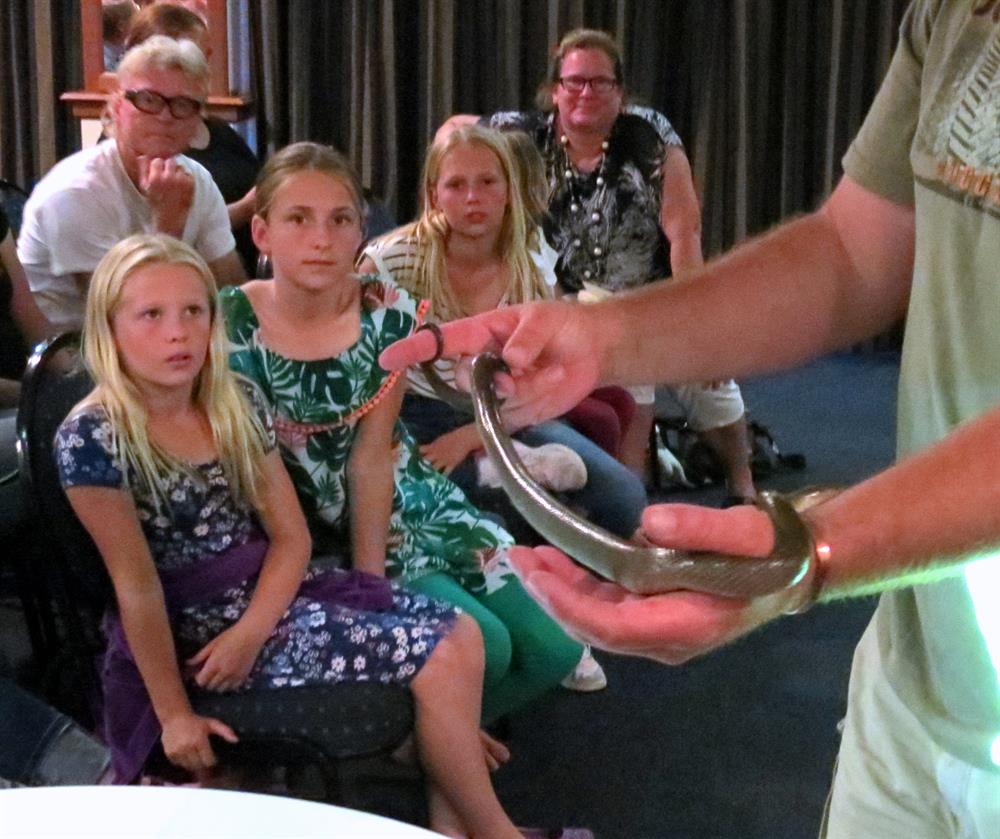GEORGE NEWS - Bob Hopkin joined a couple of hundred Wilderness residents who braved a bevy of snakes and gives an account of the occasion.
Veteran comedian and actor WC Fields, who enjoyed his tipple, once joked, "Always carry a flagon of whisky in case of snakebite and furthermore, always carry a small snake."
Last Tuesday, snake expert and qualified environmentalist Dale Holder brought not one, but six snakes to his lecture on the subject at one of the regular meetings of the Wilderness Residents and Ratepayers Association (WRRA).
Holder admitted to having had a fascination with snakes since he was in primary school and, since his hobby is partially aligned with his work, he keeps them as pets and gives lectures on their identification and control to both park rangers and the general public.
He is keen to point out that most snakes are not naturally aggressive, so, when encountering one in the wild, the safest solution is to remain still and non-threatening until it moves away.

Fascination or trepidation? Youngsters look on as Dale handles an olive house snake.
Holder said that the majority of snakes that we may encounter on the Garden Route are either non or only partially venomous, so there is no need to have a 'knee jerk' reaction when encountering a snake.
If one does get bitten, though, rather than trying to waste time trying to identify the snake or applying first aid, the best plan is to get the casualty to a medical centre as soon as possible, preferably within an hour.
"Bearing in mind that snakes bite in order to feed, and humans are clearly not on the menu, a bite to a person is part of a defence mechanism.
When hunting, normally their feeding pattern is to either squeeze their prey to death (constrictor), swallow it alive (including eggs) or bite to inject venom and wait for the victim to die," he said.
This applies to their regular food of mice, small birds, frogs, eggs and other small creatures.
Venom can be any or a mixture of three types, attacking either the flesh, nerves or blood of the victim.
Typical Western Cape venomous snakes include the puff adder, boomslang, Cape cobra and rinkhals, the former of which is by far the most dangerous.
Local partially or non-venomous snakes include the night adder, spotted skaapsteker, harlequin, Cape coral, green water, herald, common slug eating and olive house snakes.
Although participants were shown images of the most common species of the area, the highlight of the evening was a hands-on viewing of a selection of live snakes brought to the venue.
In view of its aggressive nature, the puff adder was kept at a distance from the audience, and more benign examples of non-venomous snakes included a spectacularly pretty olive house snake and 1,4m-long mole snake.
Holder recommended that, should you find a snake in your house, ask someone to watch it so its location is confirmed then call either Wayne Lurner on 078 819 2946 or Christi Theron on 079 190 9428, who will catch and remove it for a small call-out fee.
(This article was first published in CXpress on 6 December and is reproduced with their permission.)
'We bring you the latest George, Garden Route news'
















